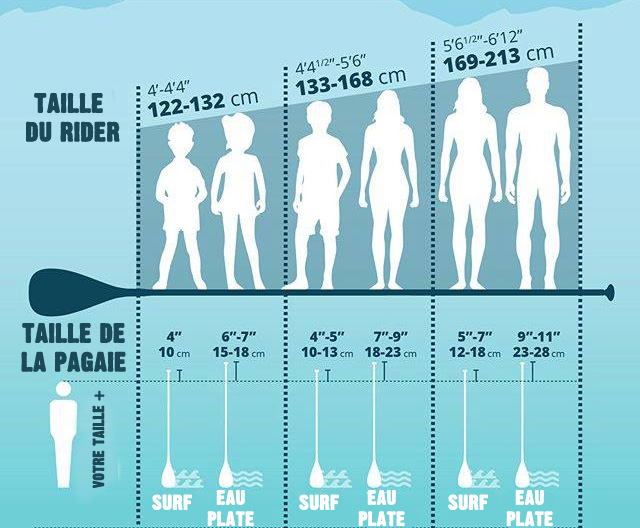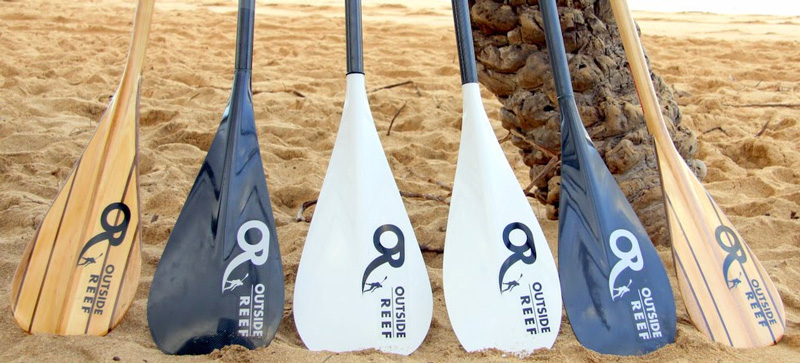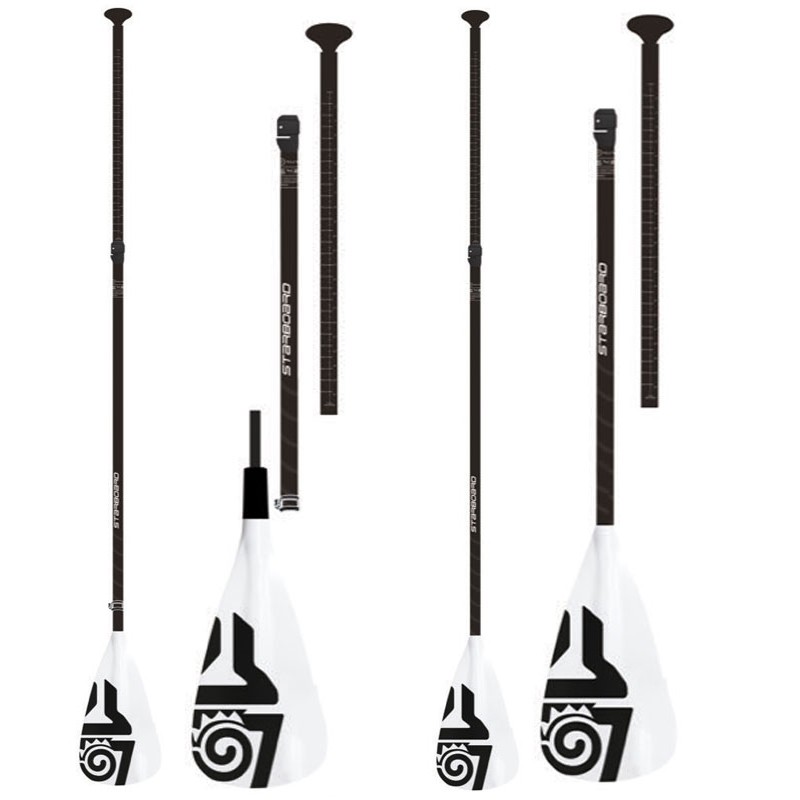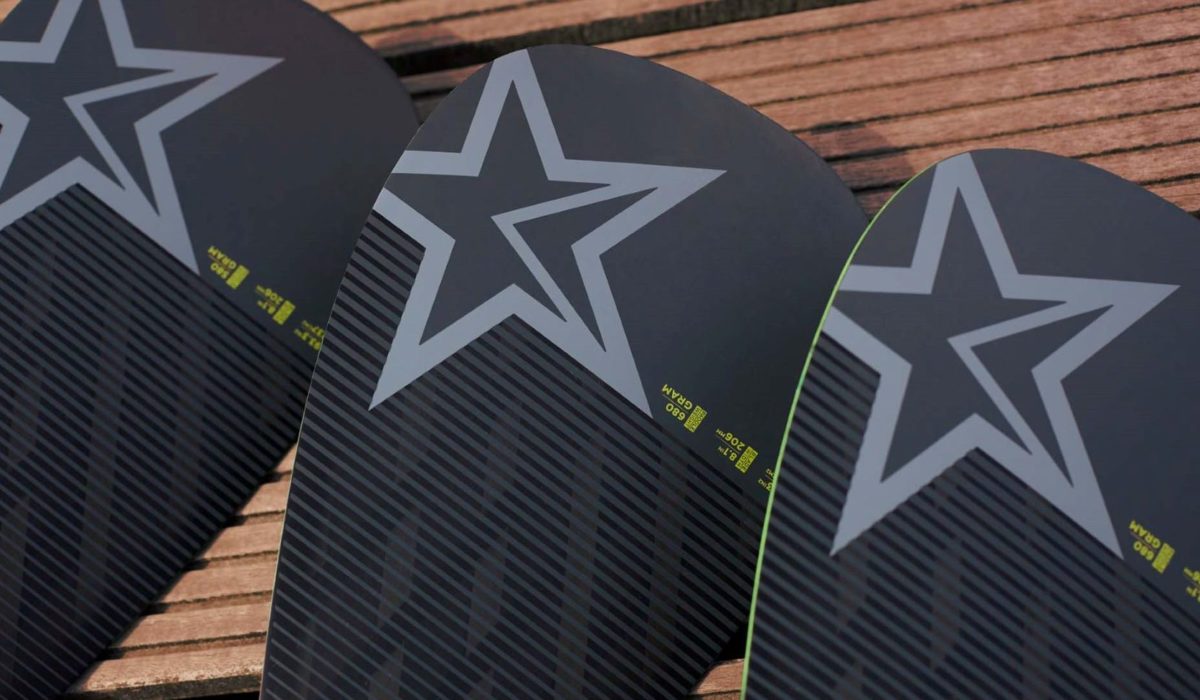The choice of a SUP paddle is based on several criteria. Like the size of the rider for the length, the type of practice influences the size and shape of the paddle, the budget that decides on the choice of materials. Finally, the transport capacity and storage often determine the type of paddle: fixed, adjustable or split.

Length of the paddle
For a good paddle movement the length must be adapted to the size of the rider. When paddling, the blade must be completely submerged, and the junction of the blade and shaft (handle) must be level with the board rail.
A simple rule for finding your length is to raise your arm and “break” your wrist:
The handle of your paddle, the end of which you have placed at your feet, must fit into the fold of your wrist. It is then possible to adjust your choice according to the board, the shape of the blade, the activity, etc.
If you are a beginner, it is better to choose an adjustable paddle. That way, you can make different adjustment tests to find the right length.
Choosing the blade
The shape and size of the blade are determined according to the type of activity: paddle surfing, white water or a small tour. Indeed, each practice has its optimal blade shape. We will favour a small blade for endurance activities such as race or touring, thus favouring the paddle frequency over power. A medium blade for controlled efficiency for a small tour. A large blade for power and acceleration when surfing or in white water.
It is also necessary to adapt the size of the blade to the rider’s size: the stronger you are, the more you can take a blade with a large surface. Always keep in mind that a blade that is too large is very tiring. Thence it is better not to overestimate yourself, otherwise you risk intense joint and muscle pain after each trip!

What material to choose?
The three most common materials are aluminium, which is inexpensive, a little heavy but strong. Then, there is fiberglass, which is more efficient and lightweight. Finally, there is carbon, whose mechanical properties ensure optimal energy transmission while reducing the fatigue of the rider due to the reduced weight of the paddles. Be careful though with the fragility of carbon paddles that don’t like shocks!
Aluminium
The choice of aluminium is ideal for beginners or small budgets. Accessible and solid, they are durable paddles. They are therefore recommended for river use. Indeed, they are more resistant to the inevitable impacts of the bottom and stones. Denser than the others, these paddles will sink. That’s why you hae to be careful not to let it go. Otherwise, you risk going back to the shore by paddling with your hands.
Fiberglass
For greater efficiency, it is better to choose fibreglass, which is an excellent intermediate in terms of price and technicality between aluminium and carbon. More responsive and lighter than aluminium paddles, they remain soft on the joints while offering a much higher level of performance.
Carbon
Finally, for an optimal level of performance, choosing carbon guarantees a light and responsive paddle. Carbon paddles can be used in most practices, especially in race, touring and surfing. However, they are not recommended in white water where the risk of breakage is too high. For transport, do not hesitate to invest in a paddle bag.
Fixed, adjustable or split paddle
While purists will prefer a fixed paddle for efficiency reasons, it is sometimes more practical to choose a paddle that is adjustable, easier to carry, or even split to store in a carrying bag.
Usually inflatable SUPs are sold with a three-part split paddle to optimize transport. High-end paddles of this type now achieve efficiencies close to fixed paddles. So there is no need to reject them outright, on the contrary!

In addition, adjustable paddles have the advantage of being able to be used for several types of practices that require different paddle lengths, all with the same paddle! They are also ideal for serving several people of different sizes without multiplying costs!

